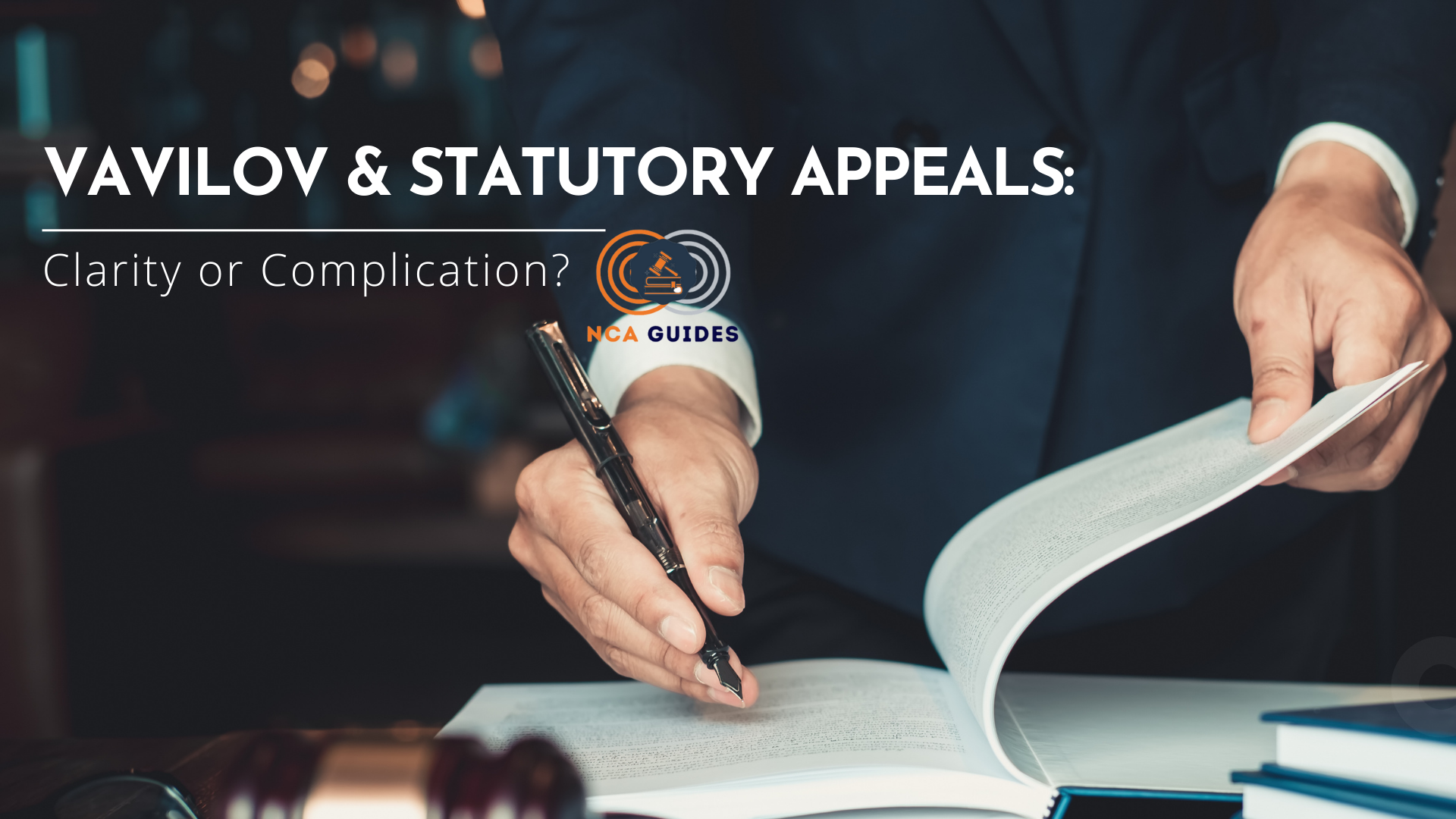
It is trite that the Supreme Court of Canada’s decision in Vavilov v. Canada (Citizenship and Immigration) altered the standard of review selection process. To reiterate, the majority of the Court set out a simplistic approach to the law relating to standard of review which had been marred by several inconsistencies in approach and application. Based on the new approach, the presumptive standard is the standard of reasonableness which may be rebutted by one of the two major categories of rebuttals set out by the court – legislative intent or by the rule of law. These categories of rebuttals also have sub-categories under them, one of the rebuttals under the legislative intent category is the provision of a statutory right of appeal in the enabling statute of the administrative decision maker. The general sub-categories of rebuttals will not be the focus of our discussion.
The Supreme Court in Vavilov recognized the importance of statutory rights of appeal and how it can give the necessary effect to the intent of the law makers. Recall that in the past there has always been a sort of back and forth between the Courts and the law makers with regards to the decisions of the administrative decision makers. On the one hand, the law makers are trying to maintain their parliamentary supremacy while the Courts are seeking to maintain the rule of law. The shift in Vavilov to recognize legislative intent as a determinant of the selection standard signaled the fact that the Courts are now considering the impact of the decisions on the law makers. The Court described this shift in Vavilov as,
“necessary in order to bring coherence and conceptual balance to the standard of review analysis and is justified by weighing the values of certainty and correctness. First, there has been significant and valid judicial and academic criticism of the Court’s recent approach to statutory appeal rights and of the inconsistency inherent in a standard of review framework based on legislative intent that otherwise declines to give meaning to an express statutory right of appeal. Second, there is no satisfactory justification for the recent trend in the Court’s jurisprudence to give no effect to statutory rights of appeal in the standard of review analysis, absent exceptional wording. More generally, there is no convincing reason to presume that legislatures mean something entirely different when they use the word “appeal” in an administrative law statute. Accepting that the legislature intends an appellate standard of review to be applied also helps to explain why many statutes provide for both appeal and judicial review mechanisms, thereby indicating two roles for reviewing courts. Finally, because the presumption of reasonableness review is no longer premised upon notions of relative expertise and is now based on respect for the legislature’s institutional design choice, departing from the presumption of reasonableness review in the context of a statutory appeal respects this legislative choice.”
Based on the reformulated selection standard, the statutory right of appeal sub-category presupposes that where the legislature has provided for a right of appeal mechanism in the statute, the standard of review to be considered by the reviewing Court should be determined based on the nature of the question before the Court and to the jurisprudence on appellate reviews. Where, for example, a court hears an appeal from an administrative decision, it would apply the standard of correctness to questions of law, including on statutory interpretation and the scope of a decision maker’s authority. Where the scope of the statutory appeal includes questions of fact or questions of mixed fact and law, the standard is palpable and overriding error for such questions.
The lingering question then is, what happens where the enabling statute of the decision maker provides for a right of appeal mechanism in part and the scope of the appeal is limited to certain question. What standard is the reviewing Court expected to apply? Can the reviewing Courts apply multiple standards to separate issues?
The Court answered this question in paragraph 52 of Vavilov stating that, “…we would note that statutory appeal rights are often circumscribed, as their scope might be limited with reference to the types of questions on which a party may appeal (where, for example, appeals are limited to questions of law) or the types of decisions that may be appealed (where, for example, not every decision of an administrative decision maker may be appealed to a court), or to the party or parties that may bring an appeal. However, the existence of a circumscribed right of appeal in a statutory scheme does not on its own preclude applications for judicial review of decisions, or of aspects of decisions, to which the appeal mechanism does not apply, or by individuals who have no right of appeal. But any such application for judicial review is distinct from an appeal, and the presumption of reasonableness review that applies on judicial review cannot then be rebutted by reference to the statutory appeal mechanism.” In conclusion, the Supreme Court made it clear that statutory appeal would not always exhaust the need for judicial review and in instances where statutory appeal is inapplicable wholly or in part, judicial review and consequentially the Vavilov selection standard would apply to that application.
Cited Authorities: Canada (Minister of Citizenship and Immigration) v Vavilov, [2019] SCJ No 65
By Kenny Okunola
This article is for informational purposes only and should not be considered legal advice on any subject matter. Furthermore, the information contained on our website may not reflect the most current legal developments. You should not act upon this information without consulting legal counsel. All inquiries or comments relating to this article should be sent to kenny@ncaguides.com or inquiries@ncaguides.com
